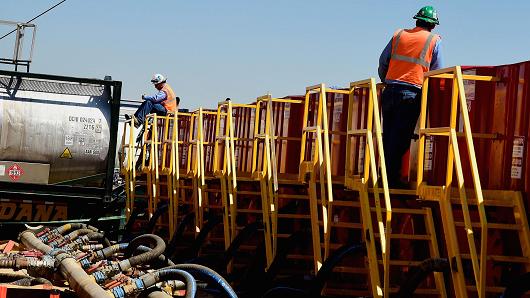
Endowed with a coastline stretching 974km—the second longest in India—and strategically located on the country’s eastern seaboard, Andhra Pradesh knows the importance of developing seaports.
The port policy that was announced by the state government led by chief minister N. Chandrababu Naidu last week is pragmatic while treading cautiously on many critical issues that have a bearing on the success of ports to be developed with private funds.
Foremost is the decision to set up a maritime board that will act as the regulator of all the ports owned by the state government, both operational and to be given to private firms for development and operations.
Andhra Pradesh—nine out of its 13 districts are coastal—intends to develop its coastline through non-discriminatory port projects providing open access to all users. Only in exceptional cases will captive ports be allotted for the exclusive use of a specific end-user.
All future greenfield port locations identified for handling commercial cargo will be developed through private investment, according to the policy. The state will use a fair and transparent procurement process, employing appropriate competitive bidding mechanisms. Ports built with private funds will be free to set rates based on market forces, except where tariff-based bidding is adopted.
The terms of the concession agreements will not be negotiated post-bid.
To cater to the increasing cargo traffic and to facilitate optimum use of port facilities, captive ports can be considered for development into a commercial port through public-private partnerships (PPPs). The developer for such projects would be selected through a transparent bidding process. The bidding would be through a so-called Swiss Challenge method for proposals originating from the captive port developer. A Swiss Challenge is a public procurement process wherein a public authority that has received an unsolicited bid for a project publishes details of the bid and invites third parties to match or exceed it.
This would check entities from misusing ports allotted to them without a public tender for their captive use, get them converted into commercial ports and sold to third parties. This has happened in the Indian ports sector much to the annoyance of the regulatory agencies and the courts.
The state government has outlined options on the sensitive issue of land acquisition for port projects.
Government land will be leased to commercial port developers at an annual lease rate of 6% of the market value, with an escalation of 2% per annum.
For all existing and new private ports, the entire land, or a part of it, may be acquired and deployed by any of the following mechanisms:
The state government funds the acquisition and leases the land to the private developer. Or, the state government acquires the land. However, the developer funds the acquisition and the state government leases the land to the private developer. The amount so provided by the developer will be adjusted against all payments due to the state government during the concession period.
The developer will be allowed to sub-lease any portion of the land leased to it by the state government. The terms and conditions of such sub-leases will be specified in the concession agreement/state support agreement. Sub-lease of port land will be permitted for port-related activities only.
The private port developer will be allowed to mortgage the leasehold rights on land in a PPP port project, along with the permissible structures in favour of financial institutions/scheduled banks.
Andhra Pradesh will provide fiscal and non-fiscal incentives such as exemption from sales tax/value added tax/goods and services tax (when it comes into force) and entry tax on all inputs required for project construction until it begins commercial operations as per the concession agreement.
Exemption from stamp duty and registration fees on the first transfer of land and exemption from payment of so-called seigniorage fees i.e., cess on minor minerals and labour for project construction activities until it starts commercial operations.
The development models for greenfield ports, including decisions on captive or commercial, will be decided by the proposed maritime board. The board will have the right to levy waterfront royalty on cargo shipped or imported by exporters/importers at rates specified from time to time.
The state will play an anchor role for planning appropriate evacuation infrastructure through rail, road and waterway, in a way that precedes port development.
The maritime board will undertake capacity planning for last-mile road and rail evacuation infrastructure for easing bottlenecks at current ports and for capacity expansion for operational ports and upcoming ports.
New port locations will be developed at a commercially reasonable distance from operational ports. This distance will be worked out for each new port after a comprehensive study and based on existing port capacity, cargo forecasts, sustainability of operating ports and their ability to compete.
This will also be subject to operational ports having adequate capacity to expand for handling similar cargo and performing satisfactorily.
Andhra Pradesh has had a reasonable degree of success in developing ports with private funds over the past 15 years, the most notable being Krishnapatnam, Gangavaram and Kakinada. The new policy will further help catalyze the development of ports in the state to capture the trade potential and logistics requirements arising from India’s ‘Act East’ policy.
[“source -financialexpress”]




